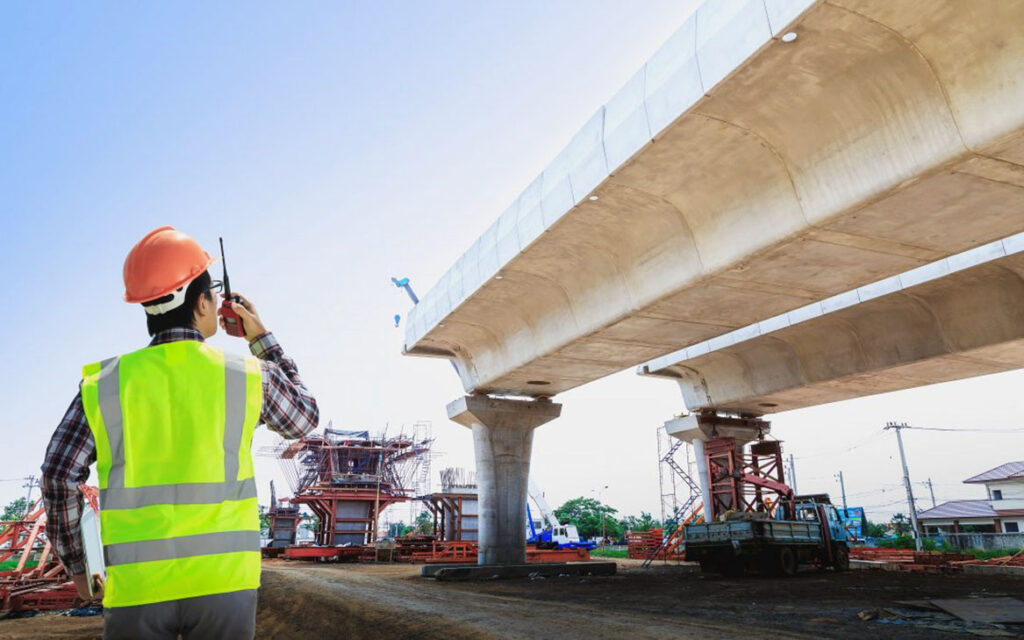DOL Updates Prevailing Wage Laws Raising Workers’ Pay on Federal Jobs
WASHINGTON—The U.S. Department of Labor announced on Aug. 8 it will be “Updating the Davis-Bacon and Related Acts Regulation,” which sets the prevailing wages contractors must pay workers on federal projects.
These changes include creating new efficiencies in the prevailing wage update system and making sure prevailing wage rates keep up with actual wages which, over time, would mean higher wages for workers. It returns to the definition of “prevailing wage,” used from 1935 to 1983, to ensure prevailing wages reflect actual wages paid to workers in the local community.
The DOL also said it will periodically update prevailing wage rates to address out-of-date wage determinations.
The announcement follows a Notice of Proposed Rulemaking on March 18, 2022, which received comments from construction industry and labor stakeholders that helped inform the regulatory updates. The DOL said the updates are the most comprehensive in decades.

“Modernizing the Davis-Bacon and Related Acts is key to making sure…that workers get the fair wages and benefits they deserve on federally funded constructions projects across the nation,” said Acting Secretary of Labor Julie Su. “This updated rule will create pathways to the middle class for more families and help level the playing field for high-road employers because companies who exploit their workers, or who don’t pay workers fairly, should never have a competitive advantage.”
The final rule’s regulatory changes are also intended to improve the department’s ability to administer and enforce DBRA labor standards more effectively and efficiently, the DOL stated as well as updating the regulatory language to better reflect modern construction practices. The rule takes effect 60 days after publication in the Federal Register.
Industry reaction to the announcement was split. While the changes are aimed at raising the hourly earnings of workers for prime contractors and subcontractors on projects that receive federal funding, for example through the Infrastructure Investment and Jobs Act and the CHIPS Act, construction groups argued the new changes will raise the cost of infrastructure projects for taxpayers.
Key changes include:
- Creating new efficiencies in the prevailing wage update system and making sure prevailing wage rates keep up with actual wages which, over time, would mean higher wages for workers.
- Returning to the definition of “prevailing wage” used from 1935 to 1983 to ensure prevailing wages reflect actual wages paid to workers in the local community.
- Periodically updating prevailing wage rates to address out-of-date wage determinations.
- Providing broader authority to adopt state or local wage determinations when certain criteria are met.
- Issuing supplemental rates for key job classifications when no survey data exists.
- Updating the regulatory language to better reflect modern construction practices.
- Strengthening worker protections and enforcement, including debarment and anti-retaliation provisions.
The DBRA requirements apply to an estimated tens of billions of dollars in federal and federally-assisted construction spending each year and provide minimum wage rates for hundreds of thousands of U.S. construction workers. The department expects a significant increase in the numbers of industry workers due to the historic investments in federally-funded construction projects made possible by legislation such as the Infrastructure Investment and Jobs Act.
“In light of recent investments in our nation’s infrastructure, modernized regulations are more important than ever to ensure fair wages and benefits for the workers who build and repair our roads, bridges, federal buildings and energy infrastructure,” said Principal Deputy Wage and Hour Division Administrator Jessica Looman. “They will help set correct wage rates for workers on these federally funded construction projects that better reflect the realities of today’s labor market.”
When contacted by CONSTRUCTION NEWS, the American Road & Transportation Builders Association (ARTBA) stated that it was still reviewing the changes to the Davis-Bacon Act. The Construction Industry Council of Westchester & Hudson Valley, Inc. is an affiliate of ARTBA.
AFL-CIO President Liz Shuler commended the Department of Labor’s final rule on Davis–Bacon prevailing wage regulations. In a prepared statement, Ms. Shuler stated, “The Biden–Harris administration once again delivered for working people by ensuring that construction workers on federal and federally assisted projects receive the pay they deserve. Today’s final rule on Davis–Bacon and Related Acts will not only strengthen prevailing wage laws, but it also will improve legal protections from wage theft for more than 1 million workers on federal construction projects. Thanks to the Biden administration’s historic federal investments and commitment to ‘ensuring the future is Made in America,’ massive job growth in construction and manufacturing is already underway.”
She added, “This rule will guarantee that workers in new and existing jobs, emerging infrastructure, and clean energy sectors are paid fairly. Every job created through these historic investments should be a good family-supporting job. That’s how we rebuild America from the bottom up and middle out. We’ll continue to partner with the Biden–Harris administration to transform our economy through a workers first agenda that lifts up families and communities across the nation.”
The National Association of Home Builders took a much different view of the Department of Labor’s actions. Alicia Huey, chairman of the NAHB and a custom home builder and developer from Birmingham, AL, stated, “The Department of Labor had the opportunity to enact positive change that truly modernizes the system for determining prevailing wages on construction projects covered under the Davis-Bacon and Related Acts (DBRA). Instead, this final rule fails to address many of NAHB’s concerns made during the rulemaking process, including the DBRA’s overly burdensome contractor requirements and wage determinations that are misrepresentative of the real wages being paid in an area. Unfortunately, this rulemaking will discourage builders from using covered federal programs that make rental housing affordable for low-and-moderate-income families, increase construction costs and exacerbate the nation’s housing affordability crisis.”
